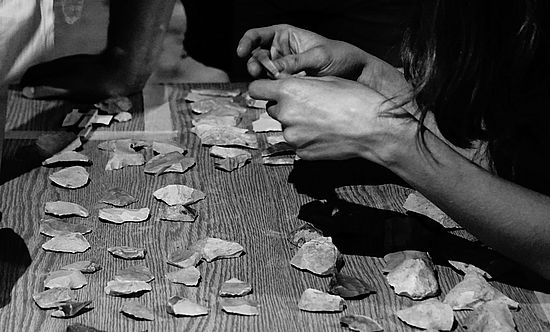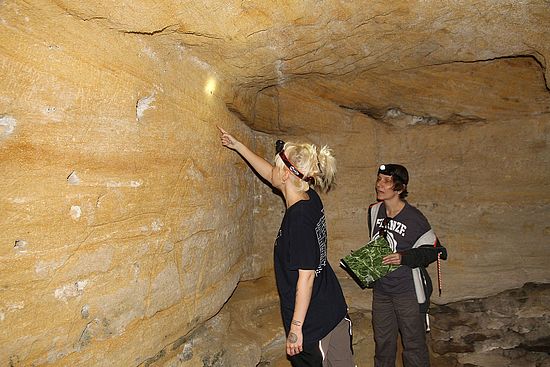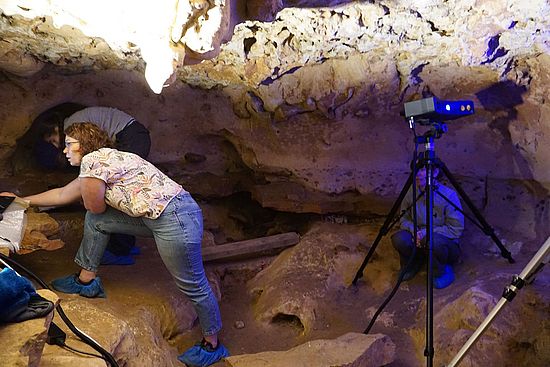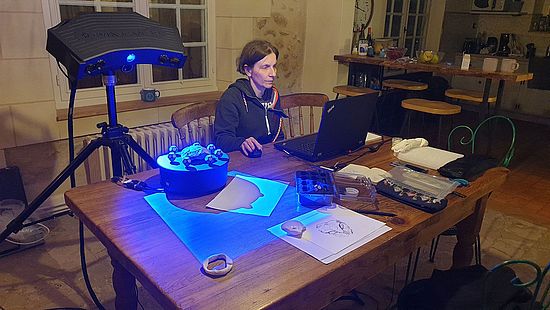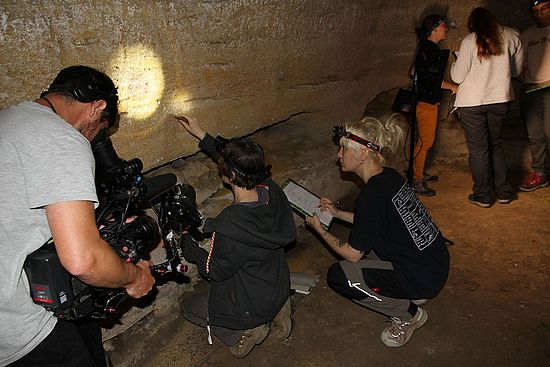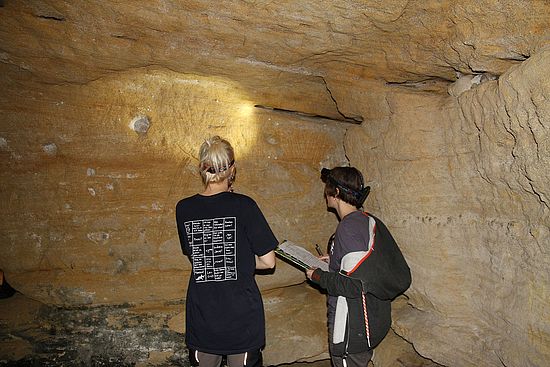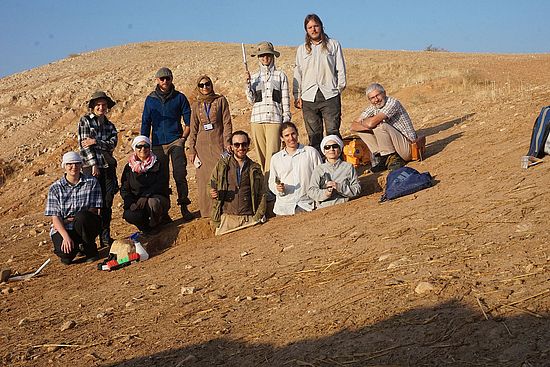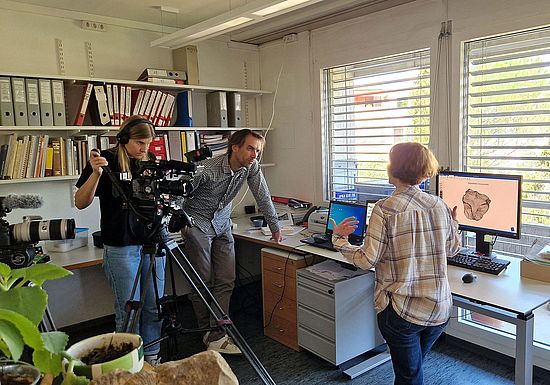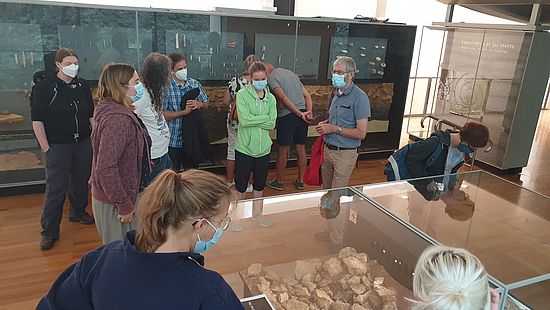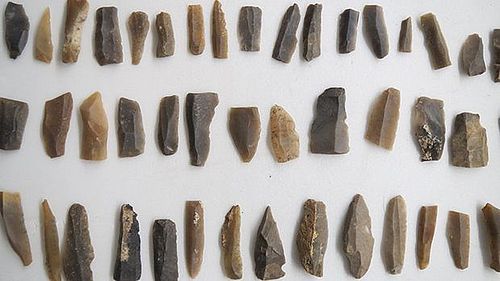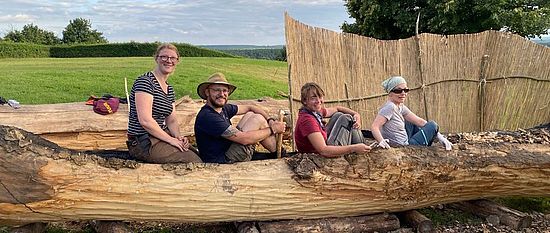
Prehistoric archaeology
Working Group Prehistoric Archaeology Dr. Dorota Wojtczak
Prehistoric archaeology deals with the history of mankind from the oldest stone tools in Africa around 3.3 million years ago to the beginning of farming cultures in our region around 7,000 years ago, i.e. the cultures of prehistoric hunter-gatherers. This long period of the Stone Age covers an important stage in the phylogeny of the Homo genus, with numerous forms that have diverged over time. This includes the spread of humans two million years ago from Africa to Asia and Europe, where new forms of the genus Homo emerged. At the same time, profound climatic upheavals (ice ages) took place, forcing humans to adapt or migrate, changes that also had a profound impact on lifestyle and material culture. Since the last ice age, around 100,000 years ago, symbolic objects have also become increasingly important, taking on their most impressive form in Stone Age art (sculpture and painting) with the appearance of Homo sapiens in Europe around 45,000 years ago. In the course of the Stone Age, we are confronted with increasingly complex forms of society, ways of life and symbols that have developed and changed again and again over the course of tens of thousands of years.
Cyclical courses
- Lecture: Cultural history of the Upper and Middle Paleolithic; takes place every four semesters, provides an insight into the most important archaeological cultures and their dynamics as well as the flexibility of human adaptation strategies during the Pleistocene climate fluctuations
- Lecture: Cultural history of the Upper Paleolithic to Mesolithic; takes place every four semesters, provides an insight into the cultural and social dynamics in the late Ice Age and at the beginning of the Holocene
- Internship: Experimental production and use of stone tools; takes place every semester, teaches the experimental production of stone and bone tools and introduces the analysis of traces of use of prehistoric tools
- Practical course: Introduction to lithic technology; recognizing and identifying stone artefacts takes place every four semesters and teaches the basics of stone technologies.
- Seminar: Stone Age Seminar; takes place every semester; with annually changing subjects on Stone Age archaeology.
- IPNA seminar and other (pro) seminars
The co-workers in prehistoric archaeology have specialized in various focal areas within the archaeological discipline:
- Morphological and technological determinations and investigations of prehistoric artifacts
- Macro- and microscopic traceology (analysis of traces of production and use)
- Experimental archaeology
- 3D imaging techniques for the documentation and analysis of archaeological objects







Contact Prehistoric Archaeology
Staff
Associates and alumni staff
| Name | Function |
|---|---|
| Dr. Reto Jagher | Guest researcher Prehistory |
| Hildegard Müller | Guest researcher Traceology |
| Claudio Simoni | Guest researcher Technician Imaging Methods |
| Prof. Dr. Jean-Marie Le Tensorer | Emeritus Professor |
| Dr. Pietro Martini | |
| Dr. Paloma Vidal Matutano | |
| MSc Nicole Reynaud Savioz | |
| MSc Arcadio Sanson | |
| MSc Mustafa Al Najjar | |
| MSc Fabio Wegmüller | Assistant lecturer |



In addition to teaching and research, public relations work is an important pillar of prehistoric archaeology. This includes the authentication of Stone Age finds for archaeological services in Switzerland and abroad, as well as regular exchanges with museums (including loans of original finds from our collection for exhibitions).
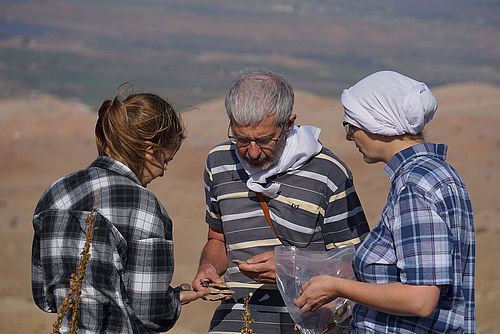
Fieldwork
Fieldwork is fundamental to all archaeological disciplines.
The prehistoric archaeology team itself regularly organizes surveys, soundings and excavations in accordance with contemporary archaeological standards in Switzerland and abroad and is also happy to provide counseling on prehistoric issues and strategies relating to fieldwork and documentation.
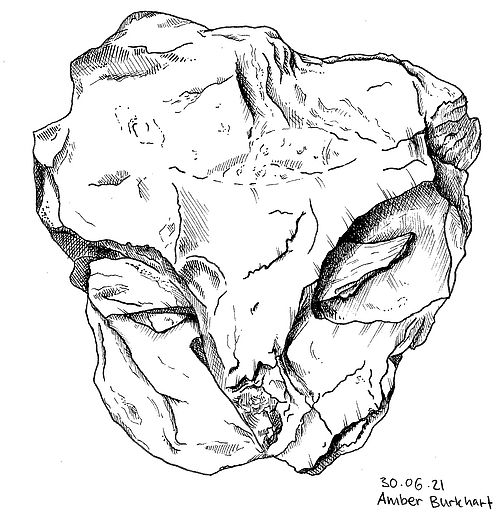
Typology & technology
Prehistoric archaeology is largely concerned with the cultural legacies of Stone Age hunter-gatherers and hunters made of imperishable materials that have survived the ages. These are mainly stone tools, usually made of flint, and to a lesser extent tools made of bone or antler. In the history of research, the main focus was on formal criteria (typology) in order to define the different cultures in space and time. Today, research focuses primarily on technological aspects, i.e. the means and processes by which these tools were made. These craft traditions, i.e. the production of the basic forms for further processing into specific tools, form the cultural backbone of the Stone Age wild prey. Formal tools can indicate specific craft activities (e.g. fur or antler processing etc.). Their spectrum depends on the activities carried out at the individual sites and is not (as has long been assumed) determined solely by the cultural context. However, specific tool forms are certainly considered to be cultural models, a part of the classical typology that is still used today. Variations in the production of the basic forms indicate adaptations to local conditions. This raises the question of how much adaptation was possible or how strong were the cultural constraints that took no account of the given situation. This results in a new approach to assessing the prehistoric legacy and understanding prehistoric man as a freely acting being. This repertoire of possibilities for a central need, the production of basic forms, has changed considerably over the course of time, but also exhibits regional specificities. In the process, contradictory as well as (for us) "logical" actions become recognizable and can be represented with the appropriate methods. In addition to the purely technical means, the IPNA also provides an extensive comparative collection for research and teaching, which allows observations to be checked against original finds and the results obtained to be assessed on a larger scale.
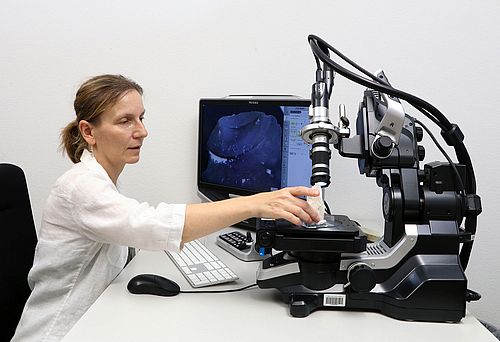
Traceology & Experimental Archaeology
Our laboratory for production and use trace analysis is a research unit in the field of prehistory that focuses on functional studies of macro- and microscopic traces on objects made of stone, wood and bone/antler in combination with systematic experiments. Research is mainly focused on prehistory, but is increasingly expanding into other pre-modern periods. The Traceo-Lab also houses a large reference collection for traces of production and use. The reference collection passes tools made of flint, but also includes objects and tools made of animal bones, antlers and wood.
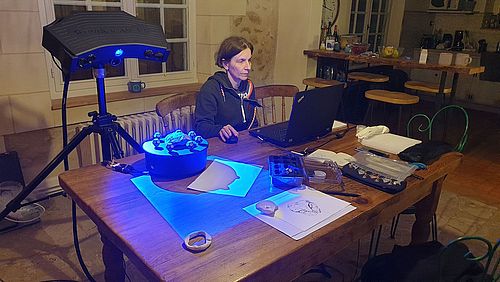
3D Lab
Documentation is the be-all and end-all of academic work. With the state-of-the-art Heavy Duty Quattro 3D Scanner from Evatronix, Prehistory is equipped for high-precision documentation of objects in the laboratory and in the field.
Access request Prehistoric Archaeology Collection
Consulation of the collections is possible after consultation with Dorota Wojtczak.
Quick Links
Social Media

